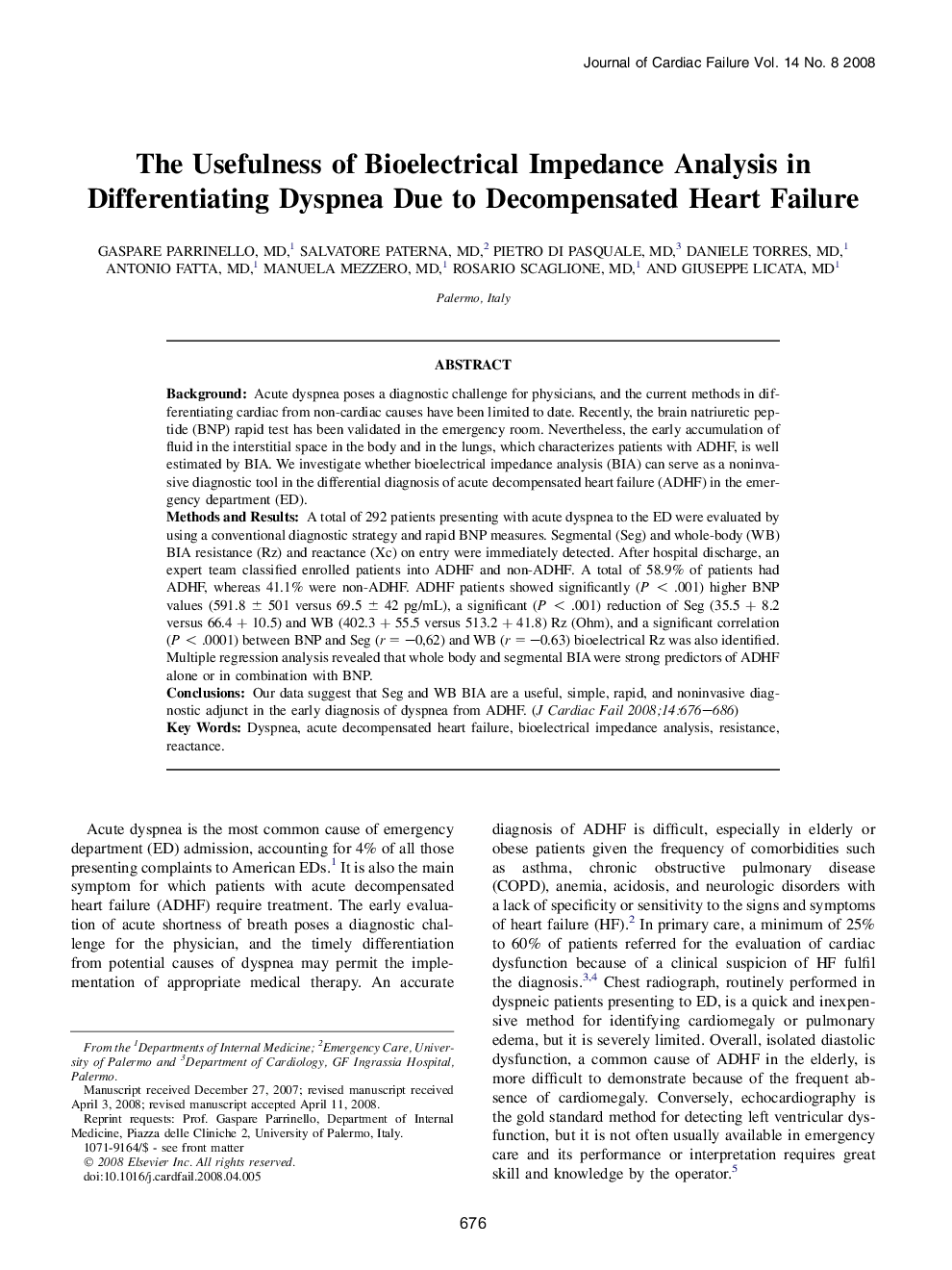| Article ID | Journal | Published Year | Pages | File Type |
|---|---|---|---|---|
| 2961533 | Journal of Cardiac Failure | 2008 | 11 Pages |
BackgroundAcute dyspnea poses a diagnostic challenge for physicians, and the current methods in differentiating cardiac from non-cardiac causes have been limited to date. Recently, the brain natriuretic peptide (BNP) rapid test has been validated in the emergency room. Nevertheless, the early accumulation of fluid in the interstitial space in the body and in the lungs, which characterizes patients with ADHF, is well estimated by BIA. We investigate whether bioelectrical impedance analysis (BIA) can serve as a noninvasive diagnostic tool in the differential diagnosis of acute decompensated heart failure (ADHF) in the emergency department (ED).Methods and ResultsA total of 292 patients presenting with acute dyspnea to the ED were evaluated by using a conventional diagnostic strategy and rapid BNP measures. Segmental (Seg) and whole-body (WB) BIA resistance (Rz) and reactance (Xc) on entry were immediately detected. After hospital discharge, an expert team classified enrolled patients into ADHF and non-ADHF. A total of 58.9% of patients had ADHF, whereas 41.1% were non-ADHF. ADHF patients showed significantly (P < .001) higher BNP values (591.8 ± 501 versus 69.5 ± 42 pg/mL), a significant (P < .001) reduction of Seg (35.5 + 8.2 versus 66.4 + 10.5) and WB (402.3 + 55.5 versus 513.2 + 41.8) Rz (Ohm), and a significant correlation (P < .0001) between BNP and Seg (r = –0,62) and WB (r = –0.63) bioelectrical Rz was also identified. Multiple regression analysis revealed that whole body and segmental BIA were strong predictors of ADHF alone or in combination with BNP.ConclusionsOur data suggest that Seg and WB BIA are a useful, simple, rapid, and noninvasive diagnostic adjunct in the early diagnosis of dyspnea from ADHF.
